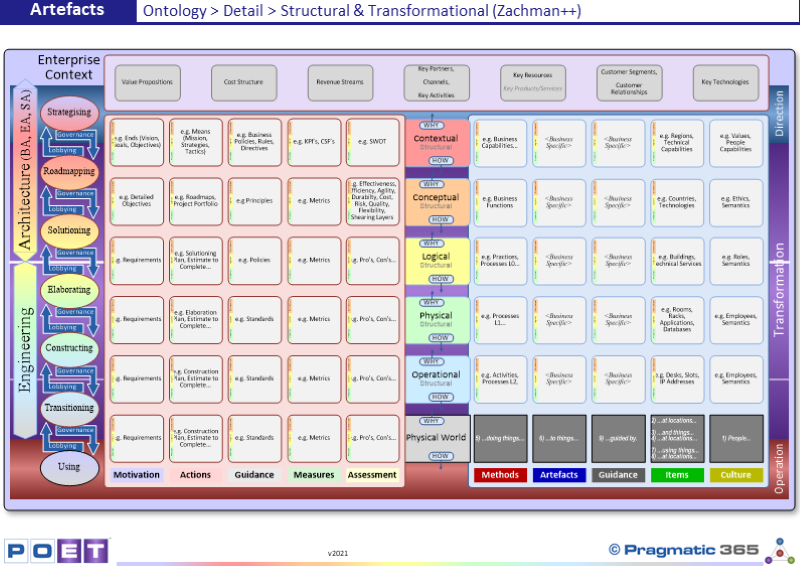
Here we see how the three fundamental ontologies from POET
are woven together.
On the right we show the Structural ontology - MAGIC. On the
left the Transformational ontology - MAGMA. Down the middle the Ontology for
the fundamental parts of all Enterprises - DOTS.
Looking at the centre, it is the Transformation Capability
we are interested in but we set that Capability in the context of the Direction
Capability above which drives it and the Operations Capability below which it
“delivers” into. (It should be noted however, that the Transformation Capability
could also “deliver” into the Direction, Support or Transformation Capabilities,
but only the Operation Capability is shown for clarity)
...to read more, please Login or Register